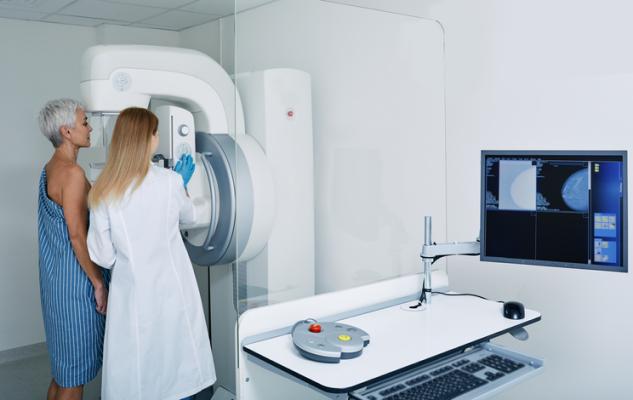
Getty Images
April 13, 2023 — Researchers have found that digital breast tomosynthesis (DBT) has improved breast cancer screening performance in community practice and identifies more invasive cancers, compared to digital mammography. In addition, radiologists’ interpretive performance improved with DBT. The results of the study were published today, April 11, in Radiology, a journal of the Radiological Society of North America (RSNA).
“Our study demonstrated that more radiologists in U.S. community practice are meeting recommended performance standards with digital breast tomosynthesis than they did with digital mammography,” said lead author Christoph I. Lee, M.D., professor of radiology at the University of Washington (UW) School of Medicine in Seattle, director of the Northwest Screening and Cancer Outcomes Research Enterprise at UW, and adjunct professor of health systems and population health at the UW School of Public Health. “This is good news for women and breast cancer screening, as digital breast tomosynthesis has quickly become the most popular breast cancer screening modality in the U.S.”
After gaining U.S. Food and Drug Administration (FDA) approval in 2011, DBT was rapidly adopted in the U.S. As of September 2022, 84% of all mammography screening facilities in the U.S. had DBT units.
Breast cancer mortality reduction from routine screening is contingent upon radiologists’ interpretive performance. Since the Mammography Quality Standards Act was enacted in 1992, screening facilities and interpreting radiologists have been required to meet minimum quality standards. Beginning in 2006, the Breast Cancer Surveillance Consortium (BCSC) has published screening performance benchmarks. The BCSC is a collaborative network of breast imaging registries conducting research to assess and improve the delivery and quality of breast cancer screening and related patient outcomes.
To establish performance benchmarks for DBT screening and evaluate performance trends over time in U.S. community practices, the research team collected DBT screening exams from five BCSC registries between 2011 and 2018.
Performance measures included abnormal interpretation rate, cancer detection rate, sensitivity, specificity and false-negative rate.
Compared to BCSC digital mammography screening exams from the same time period and previously published BCSC and National Mammography Database performance benchmarks, all performance measures were higher for DBT except sensitivity and false-negative rate, which were similar to concurrent and prior digital mammography performance measures.
“Radiologists appear to perform better with digital breast tomosynthesis and have higher accuracy on screening 3D mammograms than 2D mammograms across U.S. practices,” Dr. Lee noted. “As this becomes the mainstay screening modality, we hope to see improved screening outcomes for women.”
A total of 896,101 women undergoing 2,301,766 screening exams—458,175 DBT and 1,843,591 2D digital mammography—were included in the retrospective study. The abnormal interpretation rate was 8.3%, cancer detection rate was 5.8 per 1,000 exams, sensitivity was 87.4%, and specificity was 92.2%.
With DBT, 97.6%, 91.8%, 75.0%, and 74.0% of assessed radiologists achieved the recommended acceptable performance ranges for cancer detection rate, sensitivity, abnormal interpretation rate and specificity, respectively.
Dr. Lee notes that these benchmarks are also very important for the emerging field of artificial intelligence.
“Any new AI tools aimed at improving mammography accuracy will have to revise their own performance goals based on the improved radiologist performance with DBT,” he said.
For more information: www.rsna.org
Related Breast Imaging Content:
New Study Finds Tomosynthesis Better at Breast Cancer Detection
Single vs. Multiple Architectural Distortion on Digital Breast Tomosynthesis
Today's Mammography Advancements
Digital Breast Tomosynthesis Spot Compression Clarifies Ambiguous Findings
AI DBT Impact on Mammography Post-breast Therapy
ImageCare Centers Unveils PINK Better Mammo Service Featuring Profound AI
Radiologist Fatigue, Experience Affect Breast Imaging Call Backs
Fewer Breast Cancer Cases Between Screening Rounds with 3-D Mammography
Study Finds Racial Disparities in Access to New Mammography Technology
American College of Radiology (ACR) Launches Contrast-Enhanced Mammography Imaging Screening Trial (CMIST) in Collaboration With GE Healthcare and the Breast Cancer Research Foundation


 December 17, 2025
December 17, 2025 









